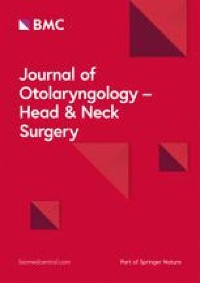
J Neurol Surg B Skull Base
DOI: 10.1055/s-0040-1722712
Objectives The aim of this study was to evaluate the clivus morphology, including fossa navicularis magna (FNM), canalis basilaris medianus (CBM), and craniopharyngeal canal (CC), on computed tomography (CT) images. Design This is a retrospective study. Setting Faculty of Dentistry, Department of Dentomaxillofacial Radiology. Participants The CT images of 500 patients (253 males; 247 females) were evaluated. Main Outcome Measures The prevalence of FNM, CBM, and CPC; the length, width, and depth of FNM; and CBM types were recorded. Also, a morphological analysis of the clivus (length of the clivus, angle between the clivus and the posterior margin of the foramen magnum, angle between the clivus and the dens axis, and anteroposterior diameter of the foramen magnum) was performed. Results FNM was identified in 5.4%, CBM in 4%, and CC in 0.8% of the study group. Type 5 CBM was not found. Type 6 was the most common CBM type. There was no significant correlation between the age and gender of patients with FNM. There were significant differences between the clivus length, the angle between the clivus and the dens axis, the anteroposterior diameter of the foramen magnum, and gender. Also, there was a significant difference between the angle between the clivus and the foramen magnum and age. Conclusions The anatomical variations of the clivus are rare and important for the oral and maxillofacial radiologist to make the differential diagnosis. These anatomical variations should not be confused with pathologic formations. The morphological measurements and anatomical variations of the clivus can be evaluated in detail on CT images.
[...]
Georg Thieme Verlag KG Rüdigerstraße 14, 70469 Stuttgart, Germany
Article in Thieme eJournals:
Table of contents | Abs tract | Full text









